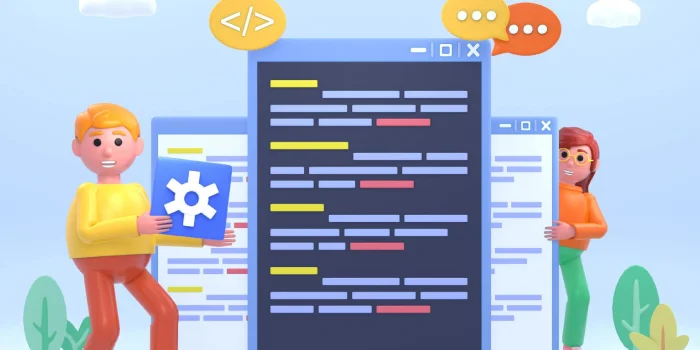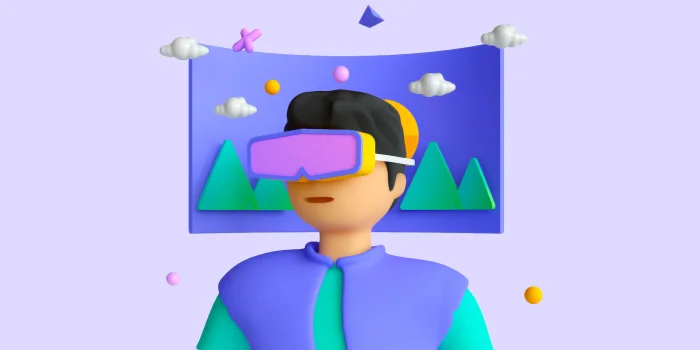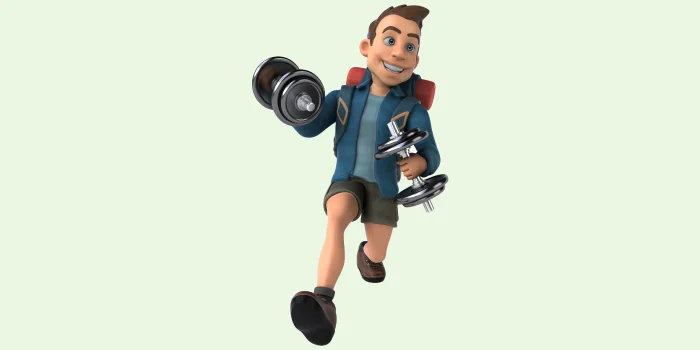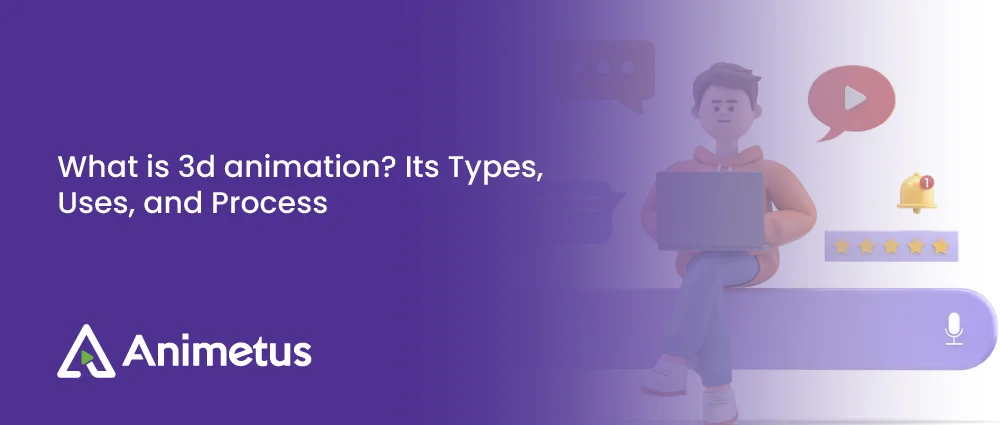Toy Story, Super Mario Odyssey, Avatar, and the Doritos Super Bowl 2022 commercials share a common thing: immense success. They do this through various 3D animation techniques, and each of these projects uses different styles of 3D animation to get audiences.
Clarification is a must when talking about the “type” of animation. Some define it by techniques like motion capture or “cel-shading.” Others consider the animation’s educational or cartoonish purpose. Another perspective focuses on the artistic style reminiscent of Disney, Tim Burton, or SpongeBob. There’s no correct or wrong explanation, just a different point of views.
Firms go for different animation types and utilize multiple techniques in their branding or marketing. We dig into this distinction in our article on animation types and styles. We will discuss how you can build groundbreaking animation with that cleared up.
If you’re eager to skip the theory and want to move straight to action, call out to Animetus 2D and 3D animation services to kickstart your 2D or 3D animation project!
What are 3d animation Types?

Before exploring and selecting the proper animation for your needs, dealing with a fundamental question is a must-What are the numerous kinds of 3D animation? A crowd exists, and we won’t cover each illustration in this blog. These are merely a few of the important ones.
Digital 3d
Computer-generated imagery (CGI), extensively recognized for its existence in modern media, occupies the dominant position in animation. From the electrifying lightsaber duels in Star Wars to the menacing sandworms of Dune, CGI infuses multiple entertainment. Its adaptability stretches from current footage betterment with motion graphics to developing new visual spectacles from scratch.
Although commonly joined with artistic expression, digital 3d is valuable in educational contexts. Rather than resorting to invasive techniques, educators can go for CGI to exhibit complex anatomical details. A student’s immersive glimpses into the human body’s inner workings can be shown. This technique mitigates ethical and lawful hindrances and appealing and knowledgeable learning experiences.
Also, if you desire to advertise something, you can add cool effects to your ad. You can begin by showing your product model or going all out, as Verizon does.
Interactive 3d
Although interactive 3D is not exclusive to video games, it is primarily associated with them. It allows real-time interaction with 3D animations, delivering a heightened user experience. While its application in marketing is limited, it performs an indispensable role in learning, allowing numerous simulations of car designs, aircraft operations, or surgical processes.
However, building immersive environments for interactive 3d animations requires large-scale time and effort from developers.
Virtual reality 3d

The evolution of interactive 3d technology naturally prospects virtual reality 3d, an area of immersive experiences where users engage with lifelike objects in a three-dimensional environment. Learning the deepness of space and objects turns into intuitive, considerably refining gaming and learning experiences.
To excel in virtual reality 3d, one must dedicate ample time and effort, exceeding the requirements of its predecessor. Nevertheless, the rewards are extraordinary when executed proficiently.
Cel shading (toon shading)
Arcane, an award-winning animated sequence, exemplifies the beguiling fusion of 2D and 3D animation known as cel-shading. This technique instills 3D objects with a hand-drawn. Here, 2D appearance generates allure among viewers. The series’ unique art style, born from cel shading, involves many other animation techniques. This contributes to its acclaim. It all began with cel shading and grew into a classy mixture of visual elements in Arcane.
Stop motion

Stop motion animation encompasses multiple subtypes, all operating on a similar principle-a sequence of still pictures of objects played rapidly to build the illusion of movement. It finds adaptable applications in either educational or marketing contexts.
Unlike traditional CGI animation, stop-motion requires a considerable time investment. However, it offers a distinctive artistic flair. Its cost is on par with CGI animation.
Claymation, aptly named, uses clay figures in its animation procedure. One of the most notable instances is the beloved Wallace and Gromit sequence.
Puppet animation, as expected, utilizes puppets. The much-admired film Isle of Dogs demonstrates the real value of this technique.
Pixilation mirrors motion capture in live-action films. The usage of real actors and objects. Particularly, slipknot’s music video for Vermilion shows this 3d Animation type.
Moreover, 2d subtypes of stop motion exist, such as cutout animation. While we won’t talk about these much, it’s important to admit their reality.
Get our 3d animation services that serve all these. Call us.
Motion capture
Mocap, or motion capture with 3D computer animation converts real actors’ motions into dynamic animations. With specialized sensors used for outfitting actors to precisely capture their motions. Once done then they are then turned into lifelike animations. Usage of this technology is found in film and video games. Notable instances like God of War-Ragnarok shows its feat.
While Mocap is expected to be used for humanoid characters and objects, the behind-the-scenes footage revealing its application in creating Fenrir truly astonishes audiences.
Do you already have an idea of what your animation ought to look like? Contact Animetus 3D Animation Services, and we will make it happen. Call us to arrange a discussion session.
The use of 3d Animation Types for Learning and Marketing Purposes
Now that you know of the most common animation kinds in 3d, it’s time for convincing explanations for utilizing them in the initial place:
- Clarity is paramount. 3D animations can help to understand complex ideas and concepts better. Lengthy essays can be made easier to comprehend by utilizing 3D visualizations. Complex ideas discover clarity through 3d visuals, specifically in educational content.
- Attractiveness is inherent to 3d animations. Despite the time investment, the allure of well-built animations fascinates viewers, especially in advertising and entertainment.
- Reusability is best. Although building 3d assets comes with time and capability, once formed, they convert into infinitely reusable, economizing either time or assets.
- Branding thrives on asset reuse. Regular appearances of mascots establish brand identity, reinforcing brand recognition and loyalty.
- Scale turns into boundless in 3d. Each detail can be portrayed vividly, delivering a large-scale view of the subject, from humans to planets to microscopic organisms.
- Fidelity extends new heights in 3d. Photorealistic animation turns into achievable with ample assets and deep savoir-faire and works as a convincing alternative when live filming isn’t feasible.
- Credibility stems from the upfront investment in 3d. Audiences perceive a degree of trustworthiness in those who commission or create such content, attributing credibility to their efforts.
Understanding the Creation Process-2D vs 3D animation
Both 2d and 3d animation begins with three main steps-strategizing, building, and final touches. The strategizing part is identical-you develop ideas, write a script, draw a storyboard, and build idea art. Our 3d animation services go through all these stages for the outcome delivery to clients.
In the production time, things begin to become jazzy
For traditional 2D animation, artists typically create 2-3 crucial frames per second, known as layouts. These are then passed on to the “in-betweeners” or “tweeners,” which add extra frames to improve the animation’s fluidity. The norm frame rate for 2D animations is 24 frames per second, though variations can be explored based on artistic preference.
Modern animation software has simplified this procedure, easing the workload for artists. Subsequently, the frames are inked and colored, marking the onset of the post-production stage.
3d animation, while more challenging than basic 2d techniques like cutout animation, shares complexity similarities with traditional 2d animation. It also desires more time and assets. Creation commences with asset creation-modeling, texturing, and rigging. Exclusively, then, animation can commence. Following animation, artists integrate VFX and lighting, opening the way for rendering the final product.
Post-production for either 2d or 3d animations carries comparable complexity, although with clear-cut unique touches
In 2d post-production, the procedure initiates with background incorporation. Then the addition of supplementary VFX applied. Sound usage is at the final stage. Here the completion of the product occurs.
In contrast, 3D post-production departs as it begins with the fusion of 2D impacts. It is an optional step subject to the artist’s will. Then, color correction is carry out to promise visual consistency. Finally, sound elements are applied.
The creation part, whether of the 2d or 3d animation, is a dynamic and complex procedure. Each stage is the formation of delightful visual stories.
Which 3d Animation Type is best for your project?
Picking the correct type of animation can be difficult, given their varied uses. Digital 3D is a default choice, but it might lessen your video’s influence if clarity or hands-on experience is crucial for your explainer video on a complex subject. Traditional 2D animation or minimal CGI works well for short and sweet promotions. However, consider using 3D animation for a more immersive experience.
In many times, 3D Animation is pricier than 2D. If you’re a SME or a startup or the Animation isn’t evergreen content, go for 2D. 3D tech becomes more productive for longer animations, considering its cost, compared to other techniques especially with long-form animations like animated cartoon sequences.
There isn’t just one option that works for everyone or strict rules to follow. Anyone claiming to know a particular choice may have little interest. Luckily, the decision generally is to choose between “good” and “the best.” Searching for direction from experienced animators or agencies can let you recognize the perfect type.
Remember, the kind of Animation you choose won’t make or break your project. It’s often a matter of selecting what best suits your preferences and needs.
Create your great 3d Animation with Animetus

Different types of 3D animation have different uses and techniques.
However, masters of Animation, like Animetus, the leading 2D and 3D animation services provider, know what kind of Animation best suits their notes and can naturally mix and match them for a heavy influence.
When contacting other 3D or 2D animation services, you can rely on their experience to determine your project’s animation type. Yet, having a basic understanding of the subject will help you achieve great outcomes.
Here’s why you ought to pick us to build pre-eminent 2D, 3D, and whiteboard animations for your project-if you’re here, chances are you’re already persuaded that we’re experts in this field.

